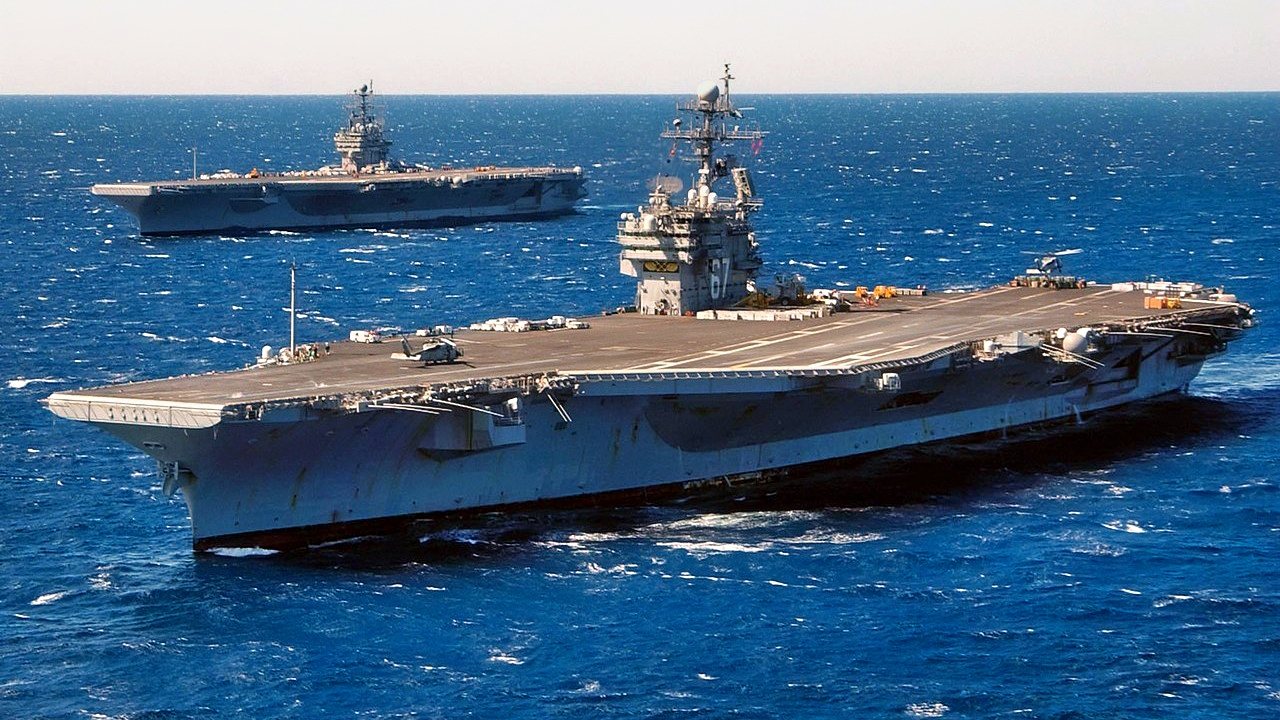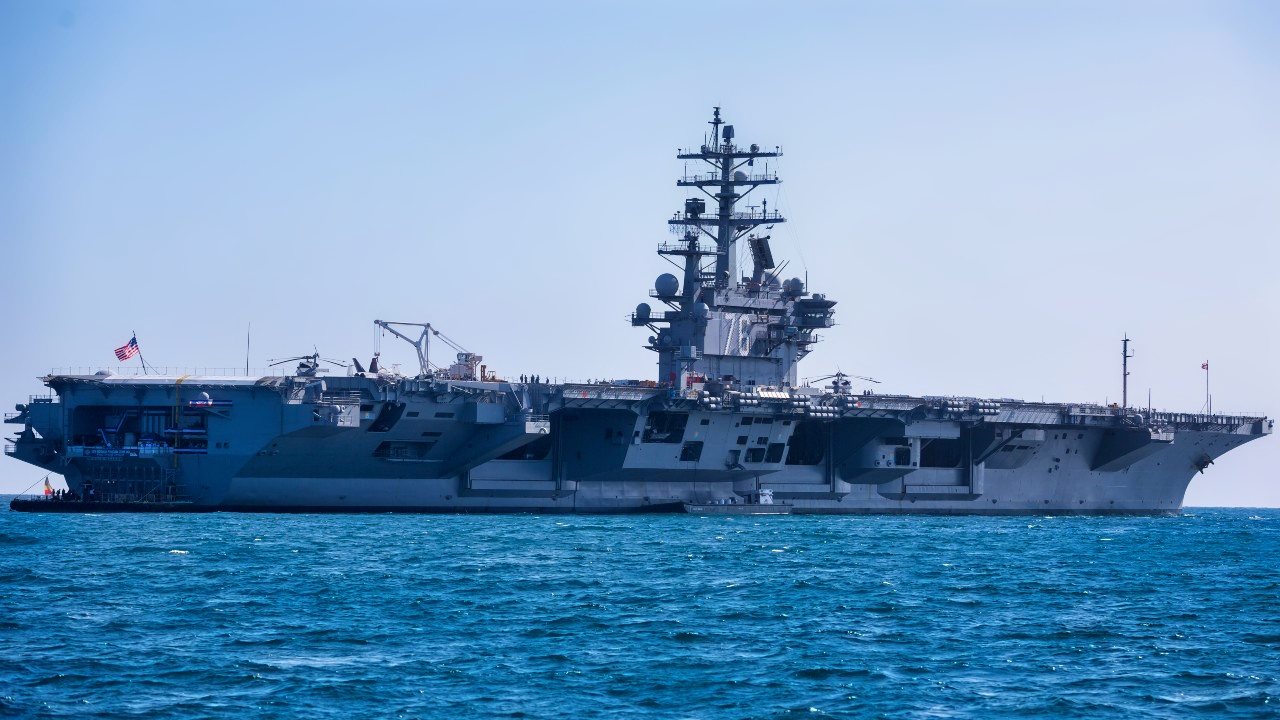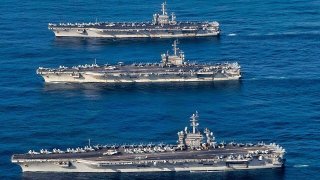The Aircraft Carrier Is Dying a Slow Death
The United States, once an aircraft carrier superpower, is facing the unsustainable costs of maintaining its fleet of eleven carriers. With the newest Gerald R. Ford-class carriers costing $13 billion each, budget constraints and overburdened shipyards make it unlikely that the U.S. can sustain such a force.
What You Need to Know: The United States, once an aircraft carrier superpower, is facing the unsustainable costs of maintaining its fleet of eleven carriers. With the newest Gerald R. Ford-class carriers costing $13 billion each, budget constraints and overburdened shipyards make it unlikely that the U.S. can sustain such a force.

-Moreover, the effectiveness of aircraft carriers is diminishing due to advanced anti-ship ballistic missiles (ASBMs) and anti-access/area-denial (A2/AD) systems developed by rivals like China and even non-state actors like the Houthis in Yemen.
-These threats keep carriers at bay, questioning their role as primary power projection platforms.
America Can’t Afford Eleven Aircraft Carriers
America is an aircraft carrier superpower. But in today’s increasingly complex, contested multipolar world, that’s like being the greatest battleship power. Carriers are some of the most expensive and sophisticated, hence the cost, of massive systems to build and maintain. In the United States today, when the country’s shipyards are a bureaucratic, undermanned, overpriced mess heap, the carrier becomes an increasingly absurd platform.
The Navy currently owns eleven of these monstrosities—with the most recent unit, the new Gerald R. Ford-class costing an astonishing $13 billion. Four more of these new boats are on their way.
The Fleet Dynamics
America’s oldest serving carrier, the USS Nimitz (CVN 68), the namesake of its class, is scheduled to be retired in the next two years. Eventually, the Navy will have retired all of its aging Nimitz-class carriers and the Ford-class carriers will somehow pick up the slack.

This is a confusing belief, though, since there is no way under current funding and limits of American shipyards, that are set to worsen over time, that the Americans will ever be able to have as large of a carrier force.
So, Washington is facing lost capabilities and overrunning costs for its primary power projection platform. All this at a time when the world’s militaries are moving in a direction wherein the carrier is increasingly obsolete. It isn’t just near-peer rivals, like China, who have developed a sophisticated suite of countermeasures making the carrier increasingly useless as a main power projection platform.
Even the otherwise unimpressive Houthis, ensconced in the deep deserts of Yemen, have managed to field an impressive array of anti-ship ballistic missiles (ASBM) that threaten the safety of U.S. carriers.
The Threat of A2/AD
As a result, the U.S. Navy has been hesitant to deploy its carriers too close to Yemen. Sure, they have engaged Houthi targets even with those ASBM systems around. But the Pentagon has been hesitant in ways they ordinarily would not have been even five years ago with the carriers.
And, as David P. Goldman recently said to me in a social media response to something I had posted last week, “The Houthis are China’s missile testing agency.”
He’s right, of course.
Regarding China, their anti-access/area-denial (A2/AD) capabilities arrayed throughout the Indo-Pacific are beyond impressive. With sophisticated tracking capabilities, China has brought some of the world’s most sophisticated ASBM and even hypersonic weapons with incredible ranges. Oh, and all these systems are infinitely cheaper than the U.S. carrier force. All this to keep the cartoonishly costly carrier force over the horizon.
These systems also greatly threaten other American surface warships.
But, the fact that the Pentagon is intent on spending whatever sum of taxpayer dollars on the carrier force that is less useful with each passing year should give American leaders pause.
Eleven carriers are a ridiculous expenditure in this environment. The submarine will be far more useful as will unmanned underwater vehicle (UUV) swarms. Neither of these is being mass-produced at the levels that are required to credibly deter China or to preserve the U.S. position in the Indo-Pacific.
About the Author
Brandon J. Weichert, a National Interest national security analyst, is a former Congressional staffer and geopolitical analyst who is a contributor at The Washington Times, the Asia Times, and The-Pipeline. He is the author of Winning Space: How America Remains a Superpower, Biohacked: China’s Race to Control Life, and The Shadow War: Iran’s Quest for Supremacy. His next book, A Disaster of Our Own Making: How the West Lost Ukraine, is due October 22 from Encounter Books. Weichert can be followed via Twitter @WeTheBrandon.
All images on the page come from Shutterstock or Creative Commons.
From the Vault
Russia Freaked Out: Why the U.S. Navy 'Unretired' the Iowa-Class Battleships
Battleship vs. Battlecruiser: Iowa-Class vs. Russia's Kirov-Class (Who Wins?)


